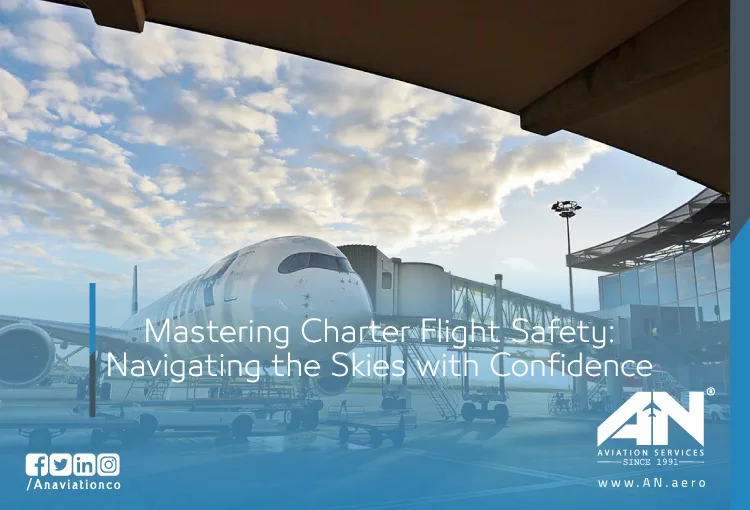
One of the defining elements of charter flight safety lies in Part 135 regulations under the FAA. These regulations outline strict operational, maintenance, and safety standards specifically designed for charter flights. Unlike Part 121 regulations, which govern large commercial airlines, Part 135 is tailored for smaller aircraft and private flight operations, ensuring all aspects of the journey meet or exceed safety expectations.
From pre-flight inspections to ensuring pilots meet rigorous training standards, every element of Part 135 focuses on preventing risks and maintaining operational efficiency. These regulations also mandate comprehensive reporting systems, which allow for real-time data collection and tracking of safety metrics.
Risk Management: A Cornerstone of Safety Management Systems (SMS)
Safety Management Systems (SMS) are an integral part of the aviation industry‘s approach to risk management. SMS ensures that charter operators not only identify risks but also implement proactive measures to mitigate them. This approach includes regular audits, detailed risk assessments, and continual monitoring of safety protocols.
For charter operators, these systems are non-negotiable. Charter brokers, for example, often collaborate with operators to ensure SMS is robust and up-to-date. It’s a layered system that works from pre-flight planning to post-flight analysis.
Federal Aviation Administration (FAA) and Charter Flight Safety Oversight
The FAA plays a critical role in charter flight safety. Through certification, inspections, and enforcement, the FAA ensures that charter operators adhere to the highest safety standards. Whether it’s checking pilot certifications, evaluating maintenance records, or overseeing charter broker operations, FAA inspections are thorough and leave no room for shortcuts.
Additionally, the FAA has implemented the Air Charter Safety Foundation (ACSF), which helps operators voluntarily go above and beyond mandatory requirements. Many charter operators participate in third-party audits through the ACSF to reassure clients of their commitment to safety.
Rigorous Training for Charter Pilots
When it comes to flying private, safety starts with the pilot. Charter flight operators hire highly experienced and well-trained pilots who undergo regular simulations and skill evaluations. This training includes emergency procedures, risk management, and advanced navigation techniques.
For passengers, this means peace of mind knowing that their crew is not only licensed but also prepared for any scenario. Whether flying through adverse weather conditions or managing complex air traffic control instructions, charter pilots meet and exceed industry expectations.
Charter Flight Safety Standards vs. Commercial Flights
Charter flights are often compared to commercial flights in terms of safety. The truth is, while both adhere to strict regulations, charter flights have unique safety advantages. For one, private aircraft generally avoid congested airports and adhere to flexible schedules, reducing the risks associated with busy commercial hubs.
Additionally, charter services cater to smaller groups, meaning that safety protocols can be personalized. From pre-flight briefings tailored to passengers’ needs to on-demand medical equipment, the focus on individual safety is heightened in private aviation.
The Role of Technology in Ensuring Safety
Modern technology plays a pivotal role in enhancing charter flight safety. Advanced avionics systems, real-time weather updates, and air traffic communication tools contribute to seamless operations. Many operators use cutting-edge flight management systems that integrate directly with FAA databases to avoid risks and ensure compliance.
Moreover, artificial intelligence (AI) and automation tools are transforming safety protocols, with real-time monitoring systems capable of detecting and addressing potential issues before they escalate.
The Importance of Choosing Reputable Charter Operators
To ensure the highest levels of safety, passengers must select reputable charter operators. Look for companies that openly share their safety records, participate in third-party audits, and employ an SMS approach to risk management. Charter brokers can also assist in finding operators who meet these stringent safety standards.
When evaluating charter services, verify their FAA certification, pilot qualifications, and aircraft maintenance practices. A reputable operator will not hesitate to provide this information, offering transparency and reinforcing passenger confidence.
Why Private Charter Flights Offer a Safe Travel Experience?
Charter flights provide unparalleled privacy and flexibility, but their commitment to safety is what truly sets them apart. Operators dedicate significant resources to ensuring rigorous compliance with regulations, offering passengers not only comfort but also the assurance of a secure journey. From pre-flight risk assessments to mid-flight monitoring, every stage of the trip is carefully managed.
Conclusion: Charter Flights—Navigating the Skies Safely
Charter flight safety is more than a box to check—it’s a comprehensive system of risk management, pilot expertise, and regulatory compliance. Thanks to advancements in technology, FAA oversight, and Safety Management Systems, travelers can navigate the skies with confidence.
Whether you’re flying for business or leisure, knowing that your charter operator meets the highest safety standards is key to a secure and enjoyable experience. By choosing a trusted operator, you’re not only investing in convenience but also in your safety and peace of mind.

